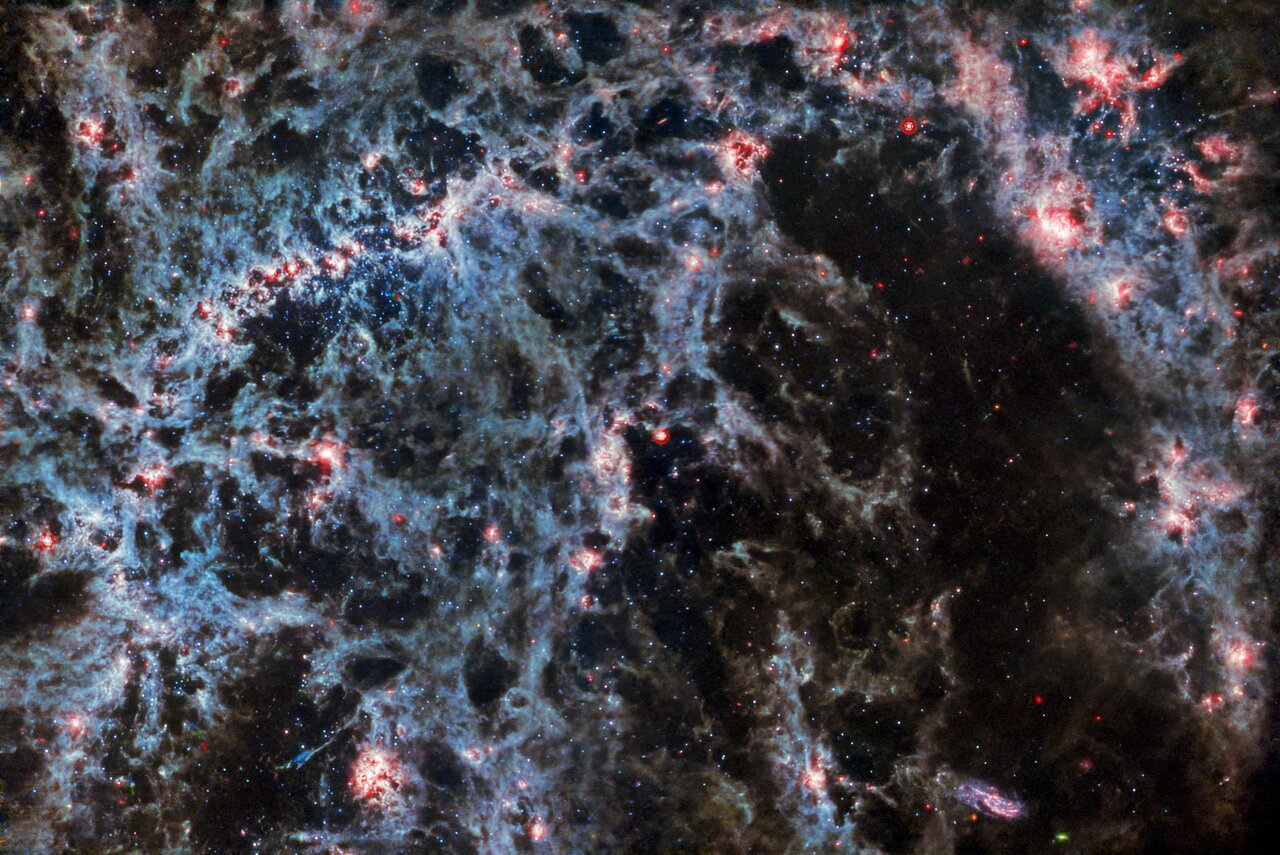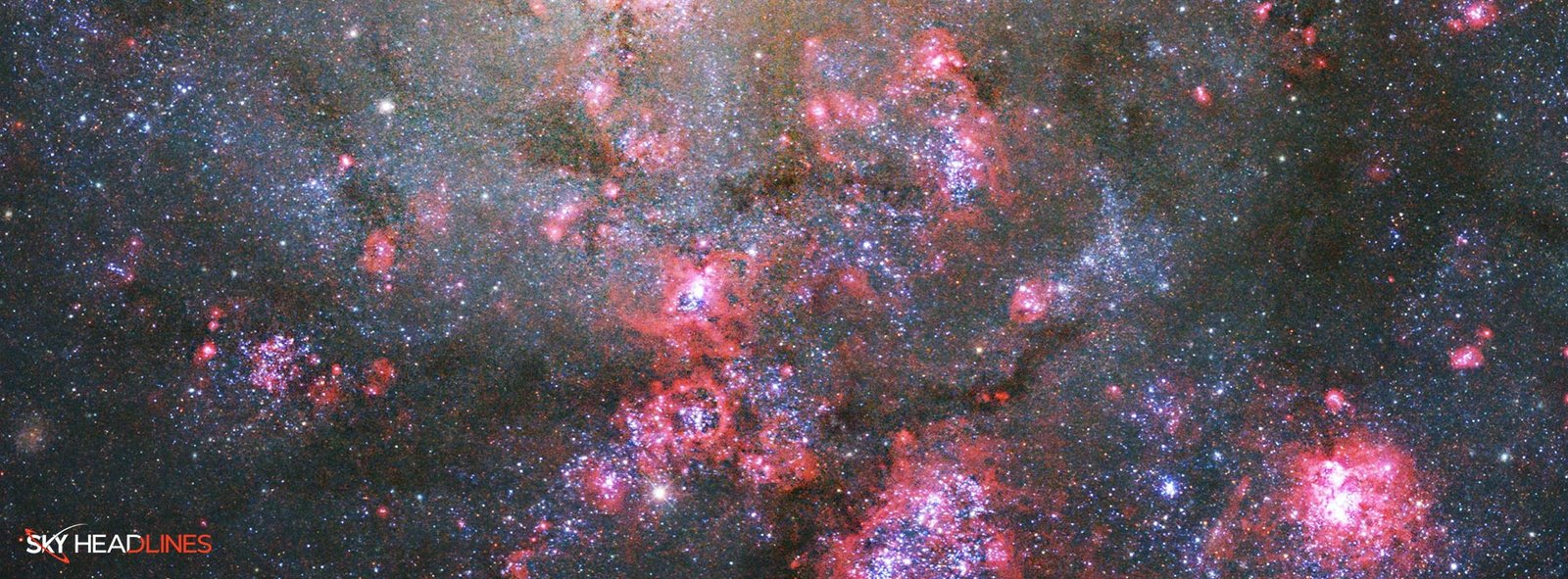News:
Introduction:
The James Webb Space Telescope has unveiled a breathtaking image showcasing the delicate interplay between dust, star clusters, and luminous tendrils of gas. This composite image, captured using two of Webb’s instruments, reveals the barred spiral galaxy NGC 5068, with its prominent central bar visible in the upper left corner. NASA Administrator Bill Nelson presented this captivating image during a special event with students at the Copernicus Science Centre in Warsaw, Poland.
NGC 5068: A Galaxy in Focus:
Situated approximately 20 million light-years away in the constellation Virgo, NGC 5068 takes center stage in this image. Its central regions, teeming with vibrant star formation, have been selected as part of an ambitious campaign to amass a wealth of observations on nearby galaxies and their stellar birth processes. Notable examples from this celestial collection include IC 5332 and M74, both of which have provided astronomers with valuable insights into the profound implications of star formation within NGC 5068.
Astronomy’s Crucial Insights:
Observations of star formation are highly significant in numerous branches of astronomy, ranging from understanding the physics of interstellar plasmas to comprehending the evolution of entire galaxies. By closely examining the birth of stars within NGC 5068 and other neighboring galaxies, astronomers hope to catalyze major scientific breakthroughs using the initial data furnished by Webb.
Building on Previous Discoveries:
Webb’s observations complement and enhance previous studies conducted using various telescopes, including the iconic Hubble Space Telescope and ground-based observatories. The telescope has amassed a collection of images featuring 19 nearby star-forming galaxies, with NGC 5068 as a prominent inclusion. These images have been combined with Hubble’s records of 10,000-star clusters, the Very Large Telescope’s spectroscopic mapping of 20,000 star-forming emission nebulae, and the Atacama Large Millimeter/submillimeter Array’s observations of 12,000 dense molecular clouds within NGC 5068. This comprehensive approach, spanning the electromagnetic spectrum, provides astronomers with an unprecedented opportunity to assemble intricate details about the fascinating process of star formation within NGC 5068 and gain deeper insights into its composition.
Webb’s Unique Perspective:
With its exceptional capability to penetrate the obscuring veils of gas and dust enveloping nascent stars within NGC 5068, the James Webb Space Telescope is ideally suited to investigate the intricate mechanisms governing star formation. Unlike visible-light observatories such as Hubble or the VLT, Webb’s infrared vision, facilitated by its MIRI (Mid-Infrared Instrument) and NIRCam (Near-Infrared Camera), enables astronomers to peer through colossal dust clouds within NGC 5068 and capture the unfolding processes of star birth. This captivating image merges the capabilities of these two instruments, providing an unparalleled glimpse into the composition and dynamics of star formation within NGC 5068.

Credits: ESA/Webb, NASA & CSA, J. Lee and the PHANGS-JWST Team

Credits: ESA/Webb, NASA & CSA, J. Lee and the PHANGS-JWST Team





